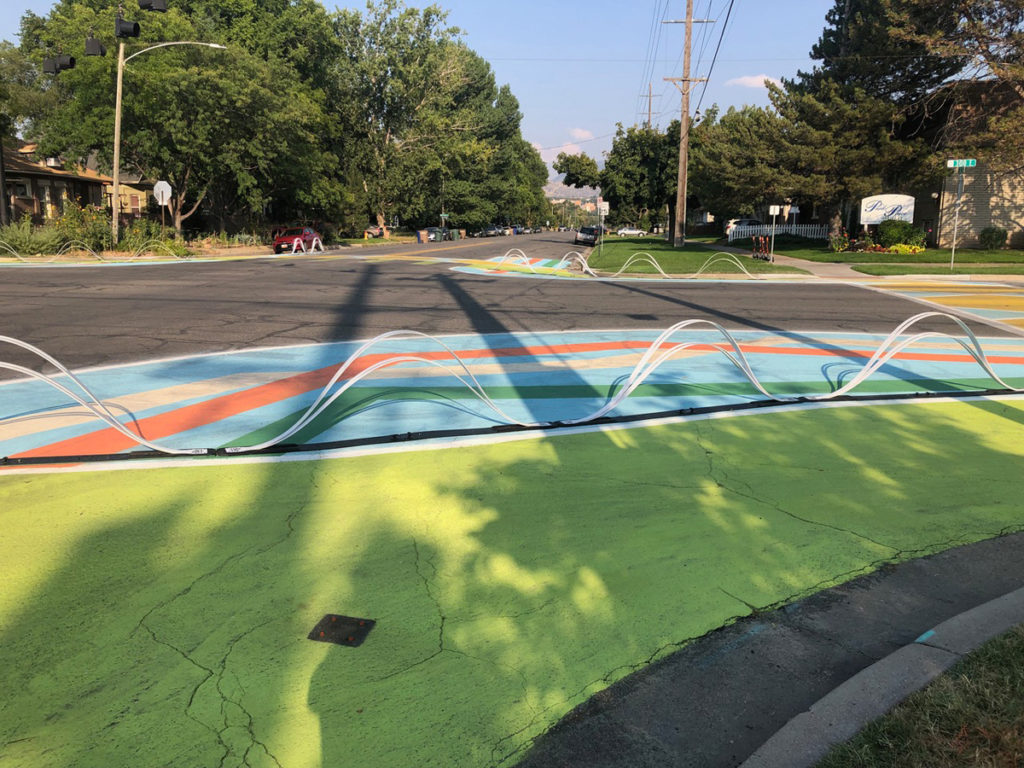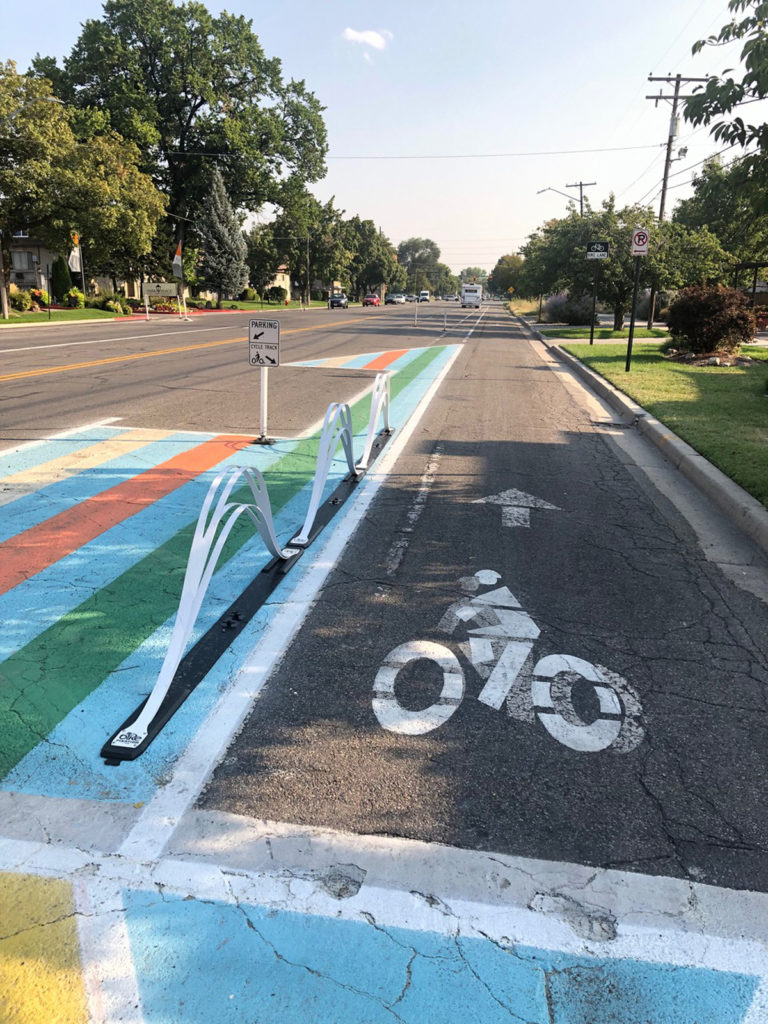By Turner C. Bitton — As demand for safer streets for pedestrians and cyclists continues to grow, pressure is building on local transportation officials to provide bicycle infrastructure. Constricted transportation budgets remain beholden to automobiles, and residents are often left without the critical infrastructure they need to commute safely by bike.
Given these constraints, creative communities are looking for affordable opportunities to create safer experiences for resident cyclists. Communities across the country, from Arlington, Virginia to Los Angeles, California, have opted for a more affordable alternative to let the proverbial rubber hit the road before permanent infrastructure can be built.

So-called Wave Delineators are popping up in communities across the country. Observant cyclists in Salt Lake City, Utah will note that the city is now implementing this inexpensive form of bicycle infrastructure. I snapped a photo of these curious things at the end of the summer while I was commuting between meetings, and wanted to explore the practical uses of such infrastructure.
Wave Delineators are essentially a bike lane that uses physical dividers to separate cyclists from vehicles, without the need for expensive concrete infrastructure or less appealing flexible cones. These physical barriers come in a variety of shapes, sizes, and materials, as well as differing levels of permanence and protection. The aesthetics of the wave format make it a great way to incorporate a more artistic approach to cyclist safety while supporting community character.

With research showing that protected bike lanes can increase bicycle traffic by upwards of 75%, it is imperative that bicycle infrastructure be incorporated into all transportation planning. This can create a tendency to trade Peter for Paul in many planners’ minds and as a result, more expensive forms of infrastructure are often delayed until major renovations or repairs are underway on streets. Wave delineated – and other forms – of flexible, semi-permanent infrastructure can open the door to a cheaper, less resource-intensive process of establishing bicycle-centric infrastructure along roadways without protected lanes.
Los Angeles is the in midst of a multi-year demonstration project testing whether such flexible infrastructure improves cyclist safety, and anecdotal evidence suggests that safety is improving. Cyclists are reporting higher rates of satisfaction with commuting, and are urging the local government to place more of the waves in other parts of the city.
Recent research from Monash University in Australia demonstrates what cyclists have long been able to confirm – painted lanes do not go far enough to protect cyclist safety. In fact, the study indicates that drivers tend to pass closer to bicyclists when there’s a white stripe and no barriers than when there’s no bike lane at all. Adding a vertical element, even a flexible one can enhance the safety of cyclists.
Given Salt Lake City’s geography and recognizing the financial considerations of building permanent infrastructure, it appears that wave delineated bike lanes could thread the needle of building out comprehensive infrastructure on a budget. As the city explores the use of wave delineated bike lanes, a certain degree of driver education will happen organically and this, above all else, will make the area a bit safer.
Turner C. Bitton is an avid cyclist and is well-known for his commitment to public service. He lives in the Glendale neighborhood of Salt Lake City with his husband Chase and their two dogs Charley and Moose.
If you have a suggestion for a commuter profile, have a commuter question, or other comments, please send it to lou@cyclingwest.com.





